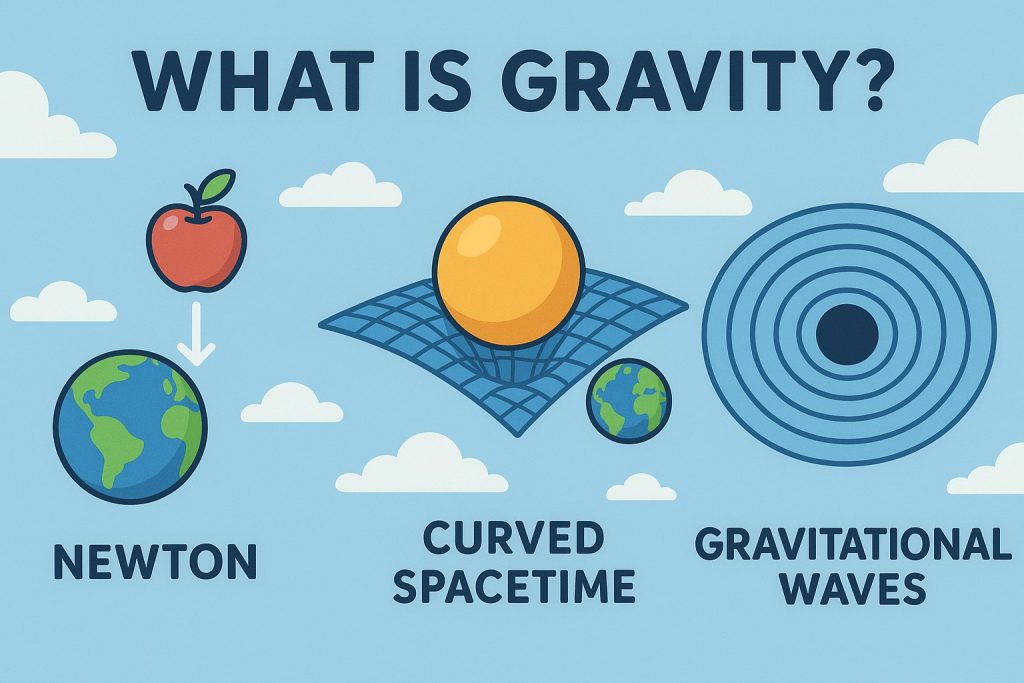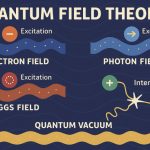Gravity is one of the most familiar forces in our daily lives—it keeps our feet on the ground, guides the planets in their orbits, and shapes the large-scale structure of the universe. Yet, despite its simplicity in experience, gravity remains one of the most complex and fascinating topics in modern physics. From Newton’s apple to Einstein’s curved spacetime, and into the mysteries of black holes and quantum gravity, our understanding of gravity has evolved dramatically.
Newtonian Gravity: Force Between Masses
In the 17th century, Isaac Newton formulated the first mathematical description of gravity. He proposed that:
- Every mass attracts every other mass with a force proportional to their masses and inversely proportional to the square of their distance.
- This force acts instantaneously across space, keeping planets in orbit and causing objects to fall.
This theory worked extremely well for centuries and is still used today in many engineering and astronomical applications. However, it could not explain all observed phenomena—especially at cosmic and relativistic scales.
Einstein’s General Relativity: Curved Spacetime
In 1915, Albert Einstein introduced a radically new idea in his General Theory of Relativity:
- Gravity is not a force, but the warping of spacetime caused by mass and energy.
- Massive objects (like Earth or the Sun) bend the fabric of space and time, and objects move along these curves.
- What we perceive as “falling” is actually following the shortest path (a geodesic) in curved spacetime.
This theory accurately explains phenomena such as:
- Gravitational time dilation: Time runs slower near massive objects.
- Gravitational lensing: Light bends around massive objects like galaxies.
- Black holes: Regions where gravity is so strong that not even light escapes.
- The expansion of the universe: Described in part by the geometry of spacetime.
Quantum Gravity: The Missing Piece
While general relativity describes gravity on a large scale, it doesn’t fit with quantum mechanics, which governs the subatomic world. Reconciling these two remains one of the greatest challenges in physics.
Several approaches aim to solve this:
- String theory: Proposes that all particles, including the graviton (a hypothetical quantum of gravity), are tiny vibrating strings.
- Loop quantum gravity: Attempts to quantize spacetime itself, treating it as a woven fabric of loops.
- Emergent gravity theories: Suggest gravity is not fundamental but emerges from more basic microscopic processes.
As of now, no theory of quantum gravity has been experimentally confirmed, but research continues through black hole physics, gravitational waves, and the early universe.
Gravitational Waves: A New Era
In 2015, scientists detected gravitational waves—ripples in spacetime caused by massive accelerating objects (like merging black holes). This confirmed one of Einstein’s predictions and opened a new way to observe the cosmos.
Gravitational waves provide a new form of “seeing” the universe, independent of light, allowing scientists to explore phenomena previously hidden.
Glossary
- Spacetime — The unified four-dimensional framework combining space and time.
- Geodesic — The shortest path between two points in curved spacetime.
- Gravitational lensing — The bending of light around massive objects due to spacetime curvature.
- Gravitational wave — A ripple in spacetime caused by the acceleration of massive objects.
- Graviton — A hypothetical quantum particle that mediates the force of gravity.


